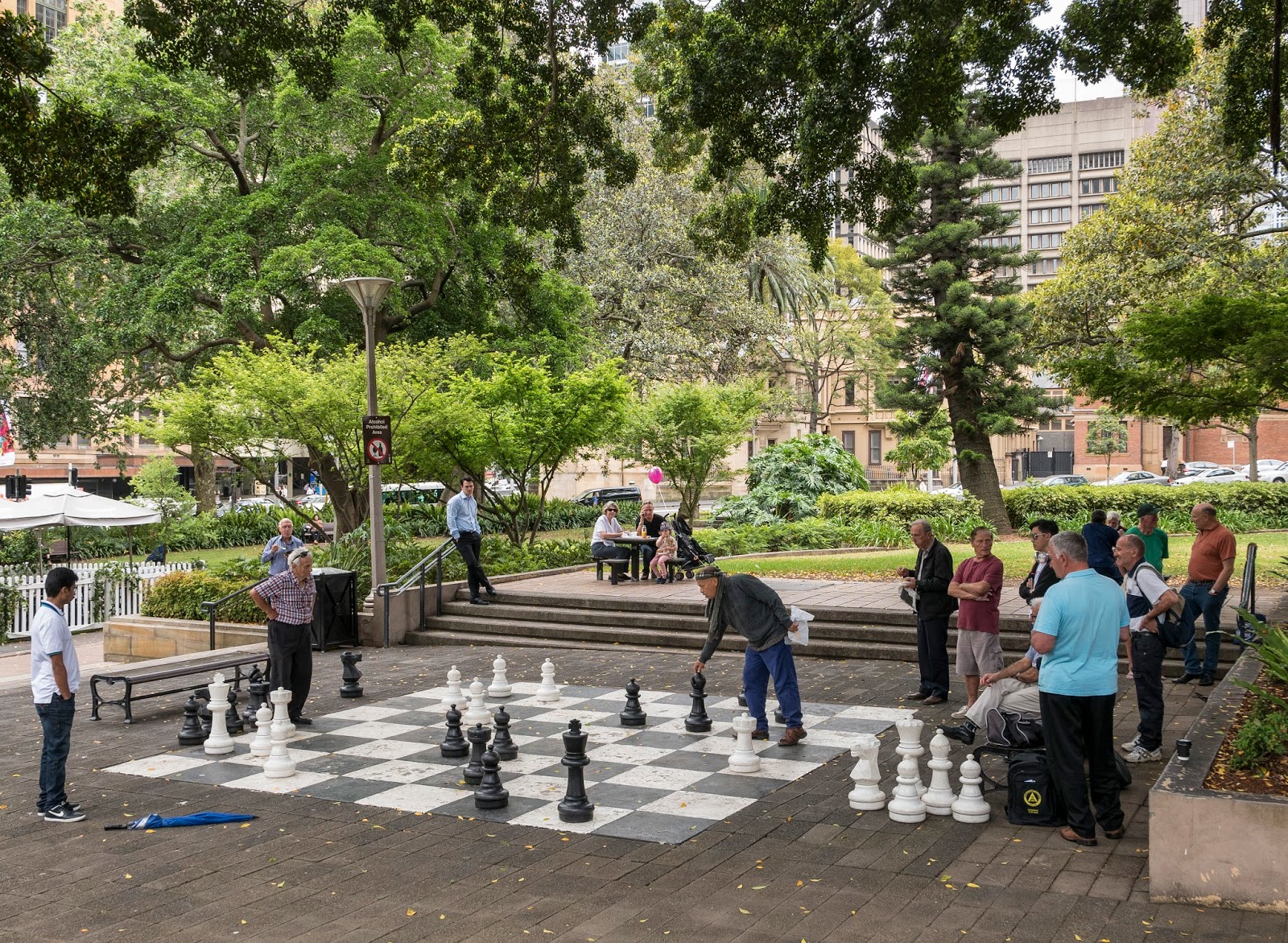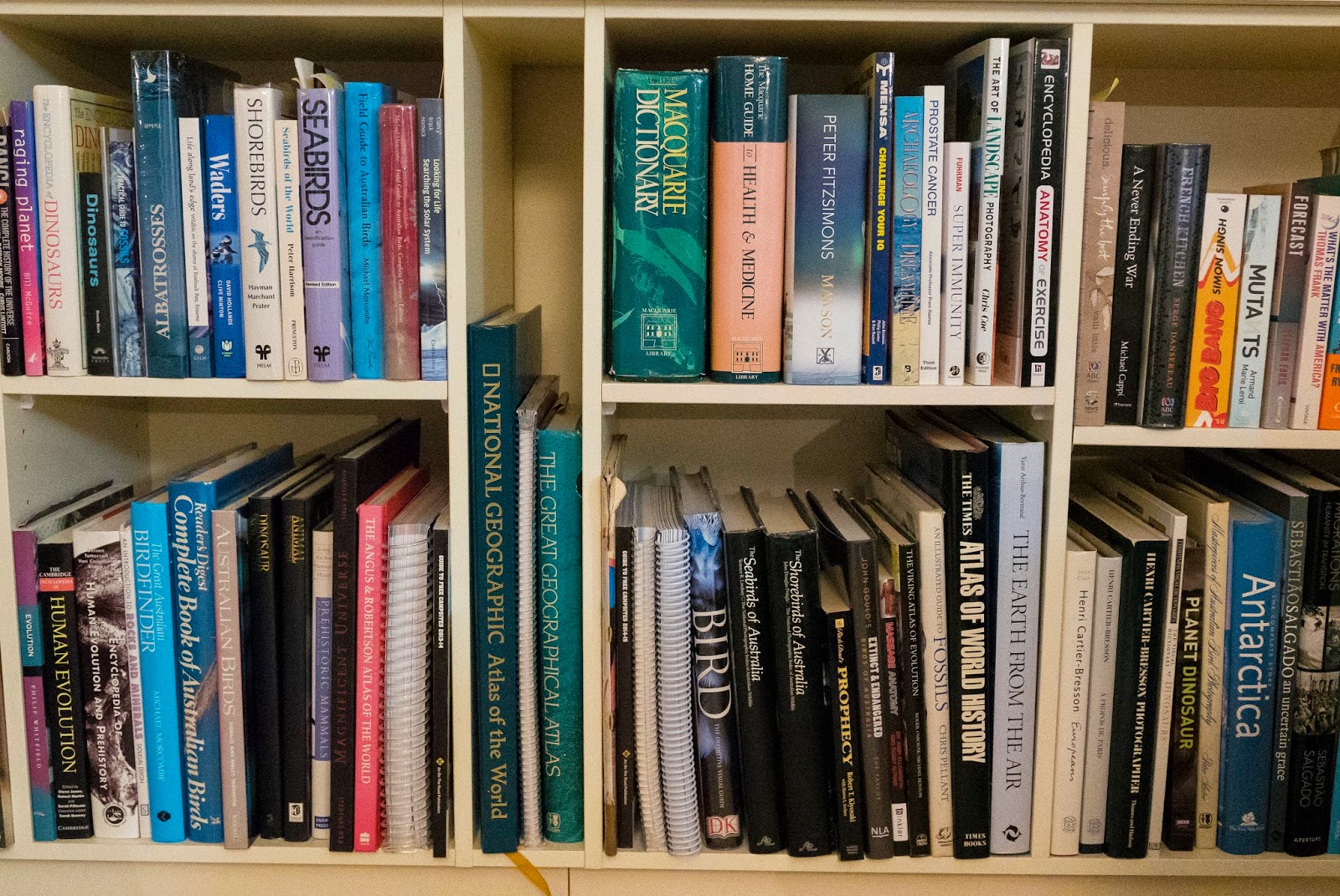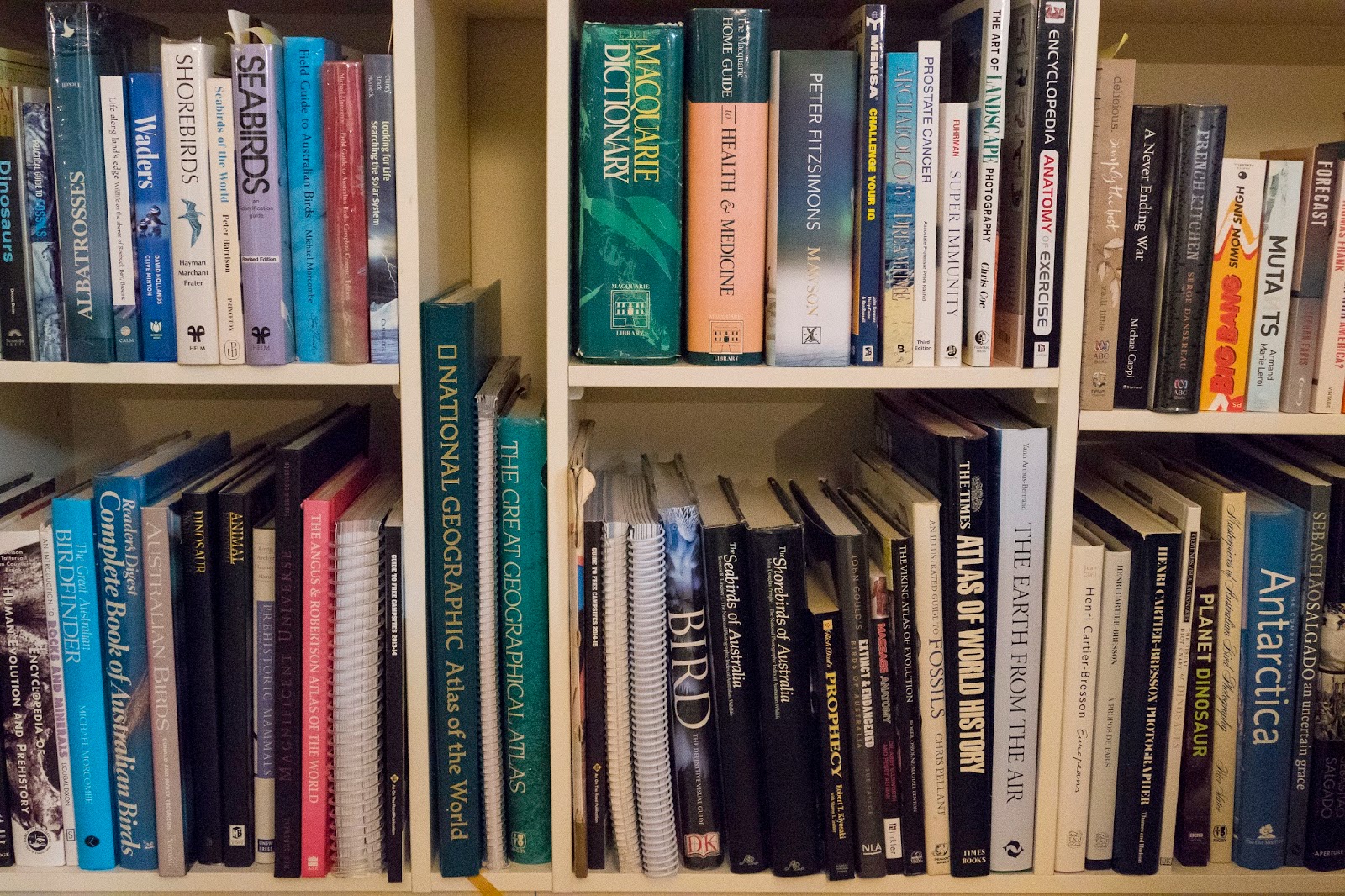 |
| LX100 Hand held, Program AE Mode, Auto ISO. 1/125 sec, f5, ISO 200. RAW capture. |
Some surprises here
When a new camera arrives in my house I always want to compare it with any other camera available. This set up a comparison between the LX100 (the new) and the FZ1000 (the not-very-old).
Published image quality tests such as those on Digital Photography Review indicate that the high ISO noise performance of the LX100 is about half a stop better than the Sony RX100(3) which uses the same sensor as the Panasonic FZ1000. DPR uses certain test conditions and Raw Converter settings and I have no doubt their results are valid for those conditions and settings.
But I use a less “technical” and more “real world” approach.
I photograph a set of books on shelves at each available ISO setting with each camera, each using the same aperture and equivalent focal length. I use AF, tripod, timer delay.
I then view the files after conversion in Adobe Camera Raw at default settings, whatever these may be. I do this because that is my normal work flow. I open the files in Photoshop and compare them, first at the default ACR settings then after tweaking the sliders in ACR until I have achieved what I consider to be a “best result”. Again, this is my normal work flow so this approach is most relevant for me.
In a separate test I also photographed my standard test chart with each camera to evaluate resolution.
Expectations The LX100 uses a larger sensor with less pixels than the FZ1000.
The table shows the actual figures:
| Camera | Sensor effective diagonal (mm) | Sensor effective pixels (millions) | Crop Factor |
| Panasonic LX100 | 19.4 | 12 | 2.2 |
| Panasonic FZ1000 | 15.9 | 20 | 2.7 |
Notes: The LX100 uses a cropped 4/3 sensor providing a user selectable variable aspect ratio. 4:3, 3:2 and 16:9 each have a diagonal of approximately 19.4mm.
The pixel count on the LX100 varies with aspect ratio but averages about 12Mpx.
I would expect the LX100 to have convincingly less noise at high ISO settings than the FZ100.
I would expect the FZ1000 to have convincingly more resolution and sharpness than the LX100 especially at low ISO settings.
* When viewing files side by side in Photoshop I reduced the size of the FZ1000 files on screen to match those of the LX100.
 |
LX100 at ISO 6400, from RAW original
|
 |
| FZ1000 at ISO 6400 from RAW original |
Findings Somewhat to my surprise, I found only one of those expectations was confirmed.
As expected:
* The FZ1000 did produce higher resolution of fine details on the test chart at low ISO settings. By the way, this benefit is difficult to see in real world photographs even with subjects containing much fine detail.
Unexpected:
* The high ISO files from the LX100 were slightly sharper at default ACR settings.
So I slightly sharpened those from the FZ1000 to match the LX100.
* After doing so I found the luminance noise levels, sharpness and color rendition at each ISO setting up to 6400 to be identical.
* At ISO 12800 the FZ1000 developed false colors with excess magenta in the dark tones and green in the light tones. The FZ1000 files were also slightly less sharp even with extra sharpening applied. Luminance noise levels were the same.
Conclusion Contrary to expectations I found the sensor in the LX100 provides no high ISO advantage over that in the FZ1000 up to and including ISO 6400.
The only advantage gained by the LX100 over the FZ1000 in low light is provided by the lens which allows a larger maximum aperture (smaller f stop) at comparable Equivalent (to full frame, 24x36mm sensor) focal lengths . This in turn allows a lower ISO setting to be used.
The table shows the actual aperture for each E Focal Length and advantage to the LX100 in EV steps:
| Equivalent Focal Length Emm | 24 | 25 | 28 | 35 | 50 | 75 |
| LX100 | 1.7 | 1.8 | 2.1 | 2.3 | 2.7 | 2.8 |
| FZ1000 | N/A | 2.8 | 2.9 | 3.1 | 3.3 | 3.7 |
| Advantage to LX100 (EV) Approximate | N/A | 1.3 | 1.0 | 0.7 | 0.7 | 0.8 |
Discussion
For low light hand held work with no flash the LX100 does have a modest advantage over the FZ100 due to the wider aperture lens. Both cameras have fast, generally reliable single shot AF and both are very responsive with fast operation.
I have not had the opportunity to test the Sony RX100(3) but this camera uses the same sensor as the FZ1000 and has a lens with equivalent focal length and aperture very similar to the LX100. So I would expect the RX100(3) to have very similar high ISO performance to the LX100.
In previous testing I found that the Panasonic GH4 has a high ISO advantage of about 0.6 stops over the FZ1000.
So it would appear that the LX100 has gotten Panasonic’s second rank sensor, which is frankly a bit disappointing.
It would also appear that Sony is well ahead of the competition when we look at the relationship between sensor size and high ISO performance.
All this leaves me wondering why Panasonic elected not to use the Sony 15.9mm sensor in the LX100. Had they done so they could have given the lens an even wider aperture and/or longer focal length range resulting in a super category killer product.
Had Panasonic used their top rank sensor the LX100 would presumably have had better high ISO performance.
In either case it looks like an opportunity missed, it seems to me.










